Don't wanna be here? Send us removal request.
Photo

#nofilter #muni #thatbridgethingyongreary (at Webster Tower & Terrace Apartments)
0 notes
Photo
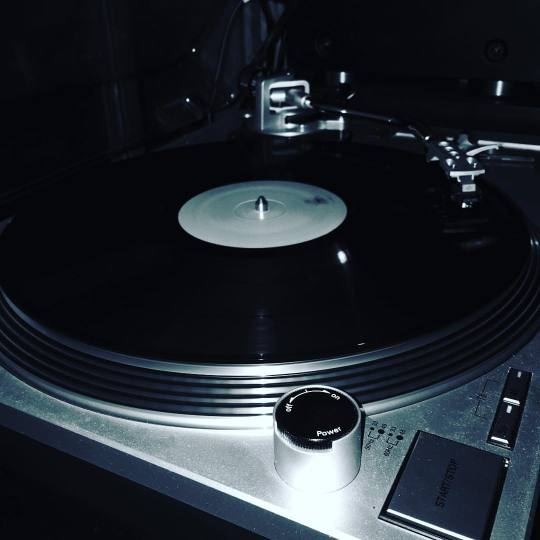
#currentmood #thegloriarecord (at 519 5Th Ave)
1 note
·
View note
Photo

I'm being followed by a moonshadow #moonshadow #moonshadow (at 519 5Th Ave)
0 notes
Photo
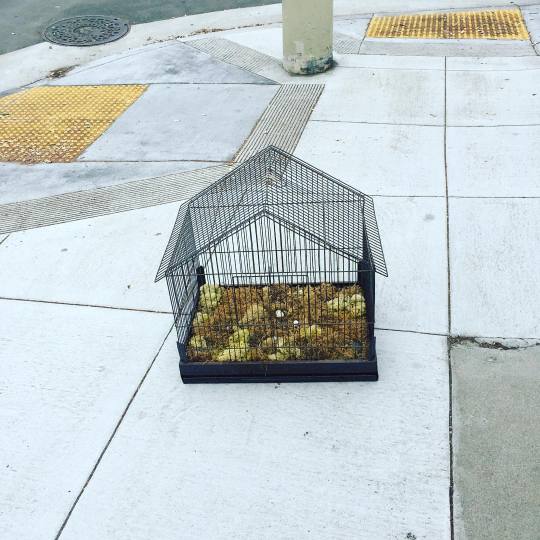
I'm your only friend, I'm not your only friend, but I'm a little glowing friend, but really I'm not actually your friend, but I am... #bluecanary #bytheoutlet #whowarchesoveryou #findalittle #birdhouseinyoursoul (at San Francisco Zoo)
0 notes
Photo

5th avenue #the519fifthave #innerrichmond #shoes #sunset (at 519 5Th Ave)
0 notes
Photo
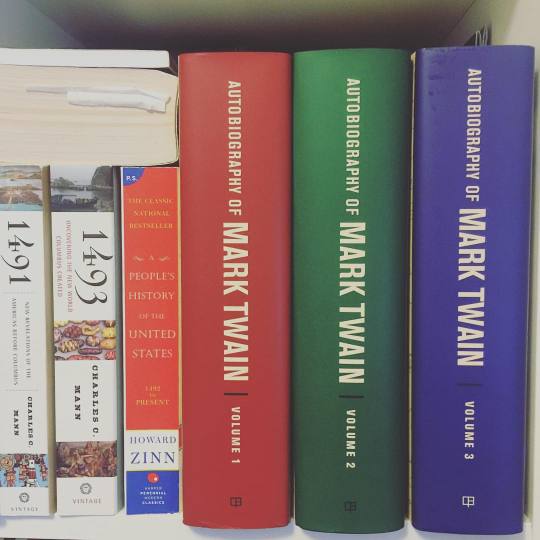
One can never have enough #marktwian #autobiography (at 519 5Th Ave)
0 notes
Photo
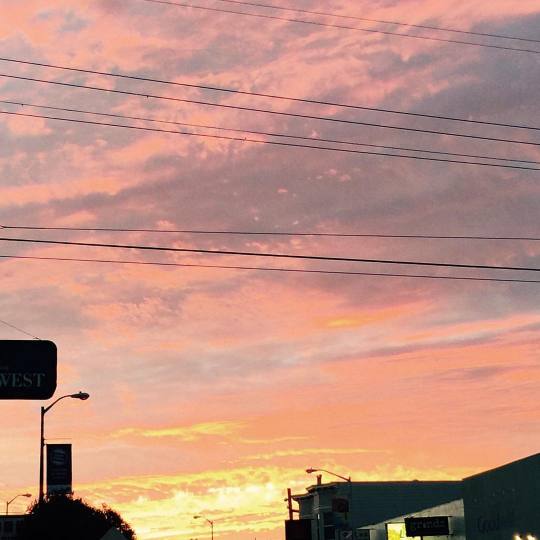
Sunset with power lines. #sunset #procrastinating #innerrichmond (at Walgreens)
0 notes
Text
The future of awesome...
The Internet now feels like it is reverting back to how it was in the 90s. It may not be as rapid a regression as the progression of the Internet was, and it most certain wont completely back track but there seems to be a lot of pre-millennials out there that are disconnecting. But beyond that, the Internet of Things, as it is called, consist of everyday objects that have been computerized, which in effect has made a fact of the adage “everything runs on computers these days.” Jared Newman talks about the Internet of Things as not showing its potential just yet, similar to how the Internet itself was perceived during its inception.
I bought a body scale recently because, well I guess I’m a grown up now and have to start caring about that stuff so I can be healthy. This scale was a tad bit more than I wanted to pay but there where very few other option at this particular store. The reason it was more expensive? Bluetooth. The scale has the ability to sync with your computer and smart phone via Bluetooth to keep track of your weight progress, or regress in my case. Sigh. Anyway, does one really need a scale that can connect to an app that can one can look at whenever one wants to? Not really. But the technology has reaching applications. The body scale example is a small device, but the concept of the Internet of Things as a greater potential in larger items, such as cars, bicycles and homes. Smart Homes are becoming all the rage and as the Internet of Things advances the more it will affect our daily lives.
I think that the Internet of Things appears as more of a curse than a blessing to some right now. Just as the Internet seemed like a flash in the pan fad when it was introduced. This is possible why some people are choosing to disconnect, and why going “off the grid” is so chic right now. The future of this technology relies on the focus being shifted away from the smaller devices to larger objects. Perfecting the Smart Home to give families security, electronic vehicles to decrease our ecologic footprint, or any medical would boost the approval of what is now thought of as more of an invasive technology than a helpful one.
Newman, J. (2015). Right now, the internet of things is like the internet of the 1990s. Fast Company. Retrieved from http://www.fastcompany.com/3044375/sector-forecasting/the-future-of-the-internet-of-things-is-like-the-internet-of-the-1990s
0 notes
Photo
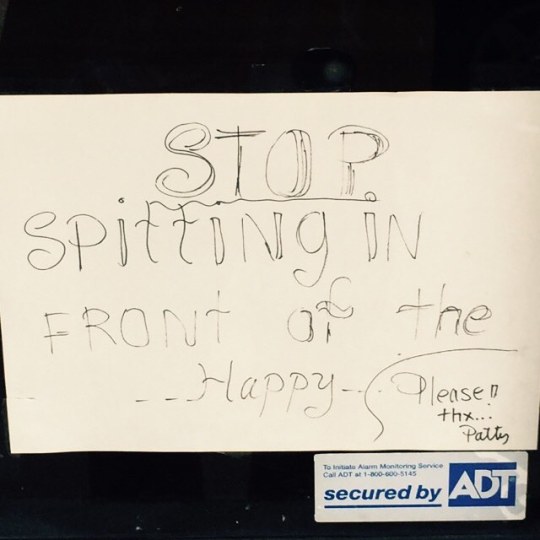
Seriously, stop spitting on the happy. #stopspitting #happy (at Happy Lounge)
0 notes
Text
The best and worst of social media...
Social media can keep you connected. It can keep you informed. It can keep you relevant. However, it cannot do this on it’s own. It needs to be told what to do and how to do it. An effective social media campaign needs to be precluded by a strategic plan with a clear goal in mind. The best uses of social media should make an impact and be amazing while creating a two-way conversation that reaches the audience where they are. I have picked a couple of examples of best and worst uses of social media to demonstrate this point:
First, (and I’m going to sound like a broken record here) the New York Public Library’s Intsagram account @nypl is a great example of an effective use of social media. It promotes the history of the NYPL and it’s various programs in a unique and very fun way. With creative hash tags like #letmelibrarianthatforyou show the history of reference librarianship through images of handwritten reference questions found in a box in the library’s basement. #bookfacefriday offers fun a creative displays of people, and sometimes animals posing with books.
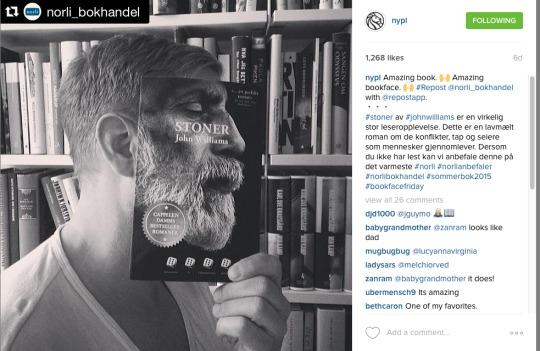
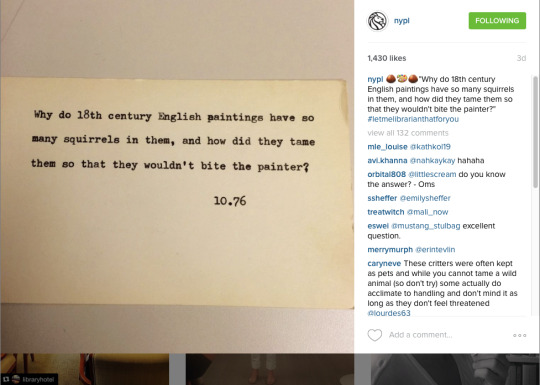
A great example of a social media campaign gone wrong is the attempt by McDonald’s to use Twitter to market the brand. The campaign had good intentions, with the hope that Tweeters, under the hash tag #McDStories, would share fond memories of the restaurant. To be fair, I think this is a good idea in theory. It came in the midst of a lot of controversy centered on McDonald’s unhealthy menu, so it’s understandable that the Company would want to revamp its image a little by reminding social media users that the chain was a great place for families to build memories. Sounds nice right? Well, if this campaign proved anything its that you cannot dictate what is trending, and unhealthy diet and poor working conditions were definitely trending during this time. Horror stories about obesity, dog food and slave wages flooded the #McDStories feed forcing McDonald’s to remove the hash tag after only a couple of hours. This did not stop people from using the hash tag even as long as week later. McDonalds could not even take down the Twitter page, which leave this permanent damaging information on it account. The campaign was a huge success, but just not they way McDonalds intended. check it out...
https://youtu.be/Z0hh3M-EanA
2 notes
·
View notes
Photo

Super scary drawing I found in a book about zero. #zerohasgeelingstoo #superscary (at Green Apple Books and Music)
0 notes
Text
Analyze this...

Analytics. It just sounds boring, and lets be honest, for a lot of us it is. It is so crucial for us to understand analytics to effectively evaluate that drive our everyday lives, as well as our library programs. Do we really watch that many Hockey games to necessitate have an entire NHL channel package for an extra $X a month? Will I ride the bus enough this month so this $70 clipper card will be worth it? How many hits is the library’s book club Facebook page getting?
There are so many ways to use social media to convey information that monitoring and analytics have become a booming industry within the digital realm that allows institutes to track digital customer data in real time. There is a rising need for tracking this data and the numbers that Fan and Gordon (2014) state are mind-blowing. In 2012 there were nearly one billion Facebook users, spend collectively 20,000 years online everyday. Over 140 million active Twitter users sent more than 340 million tweets, and when YouTube analyzed its video feeds they showed 100 million users liked, disliked or commented.
I found these statistics staggering, especially the Facebook users spend 20,000 years on Facebook. I was one of those users, and chances are you were too. I never really considered thinking about internet use in terms of years, but its an interesting number to have. Consider even a fraction of those “years” being spent on your library’s Facebook page, think of the information you can delivery to the patron, or potential patron. Analytics also helps to evaluate the program’s popularity and whether more resources should be allocated, and time invested to the project. The analytics can also help to determine if the design of the product is acceptable or if a re-design is in order. Monitoring is also hugely important because it provides the opportunity to response to user concerns at a more rapid pace. Most users want a response as soon as possible, usual same day. The likelihood of that happening is slim unless the site is monitored on a regular basis. Social media generates so much traffic that analytical tools have become an extremely useful tool that track returns on the investment, how to identify and engage users, and what tactics to create and maintain effective social media strategies.
0 notes
Text
How libraries market social media
How Libraries Market Social Media…
I think the keys to attracting users to a libraries social media endeavors are lined out in by King (2015) were he discusses the six steps to making social media into a powerful tool. I think that the first three steps are the most important as they help set up a successful social media experience for both the library and the user.
The first step involves setting up a channel, or account. I think this is truly the most important step, and it’s no coincidence that it is number one on the list. The account must be recognizable to your patrons. It should be bare the same name as other tools in use by the library and definitely should incorporate the name of the institution. Step two is the creation of goals. What does the library hope to achieve with this social media tool? Ultimately the library would want to gain local followers and advocate the library, perhaps even engage local businesses to create partnerships outside the library. The third step is to stop and learn how the use these tools. Learn what local people are saying, local hashtags and other discussions. King also discusses ongoing steps such as the creation of a team to monitor and post to these accounts, the creation of content, and the use of analytics to measure the success (King, 2015, pp. 33-34).
With social media tools becoming more relevant, their use becomes more necessary for libraries. There is a shift in how we as a society communicate form one-way to two-way communication. As Mills (2012) states we can no longer speak at our audience, we must speak with them. The content we provide our users through these social media tools should be considered with respect to the audience. If content does not appeal to the audience it will not likely catch on.
King, D. L. (2015). What to Do from Start to Finish. Library Technology Reports, 51(1), 33-35.
Mills, A. J. (2012). Virality in social media: the SPIN Framework. Journal Of Public Affairs (14723891), 12(2), 162-169. doi:10.1002/pa.1418
0 notes
Text
Libraries and Big Data...
I buy a lot of stuff from Amazon and I have never really been that concerned about the data being collected based on my purchases. I actually think it can be a good thing, it provide suggestions that you may not have otherwise know about that are similar to item in your order history. I generally buy music media, like CDs and Vinyl so the suggestions are pretty neat because I have found out about some bands and artist that I really like because Amazon thinks they are similar to other artists I have purchased, or other customer who purchased the same items also bought them. Similarly, Facebook ads popping up in the middle of my feed offer the same service, but it’s slightly off in that it is usually something I have already purchased and they are asking me to buy it again. That can get a little irritating. So, it is not so much the collection of data that worries me but rather the amount and the use of that data. When is it too much?
I feel that Library can use big data but still maintain patron privacy. The library is in a position to gain knowledge, and part of that knowledge is information on their patron be them students, faculty, or the public. Public libraries are a prime area where big data collection can benefit the user as well as the library. Digitized collection allow for metadata and indexing to be attributed to items so library can not only have a searchable database of the collection, but they can add value by adding a story behind the item. This can be applied to patrons account history as well. Some libraries have an “opt in” reading history attached to their online ILS where patrons can choose to have there check out/in history stored. This could be used by the library to suggest further reading, like an automated reader’s advisory, in an effort to suggest items form the collection that the patron may not have noticed before. Ideally this information would only be used by the library system, and the “opt in” requirement would allow the patron to choose if the service is right for them.
It seems that the digital age has brought as many headaches as it as brought conveniences, so the trick is to be willing to embrace these new technologies, but be wary of malicious intent and give information only to trusted entities, like the library!
0 notes
Text
The Impact of Social Media on Education…
Social media has become the most ubiquitous form of communication in the digital age. Its main purpose being to sharing information via platform such as blogs, and social networks like Facebook. With the preference for social media on the rise the need to become information literate is increasing in importance as well. Therefore, as the need for information literacy increases and as the popularity of social media applications and tools soars, the level of engagement must increase. How do we implement these tools as information source in an academic setting?
A major challenge comes form the ubiquity of social media itself. There are so many applications out there, which ones are appropriate to use as information sources. Studies have shown that the average student are likely to use social media platforms as information sources because they are just as accessible as other online sources, and are as convenient as human interactions. Sites such as Wikipedia have risen to be among the most used social media tools for information. Wikipedia is certainly an easily accessible; in fact it is arguably more accessible than other online sources as far as finding quick information and keyword searches.
The question here is, can Wikipedia be a reliable information source? It seems that, while the validity of the information will always be heated topic of discussion, as a reference point for student looking to become more familiar with a subject Wikipedia is a remarkable tool and a prime example of how information literacy instruction is necessary not the casual patron, but to the student as well. In my experience doing research I found that using Wikipedia as a starting point always helps me getting a grip on what the subject is and allowed me to get some more specific keywords to fine tune my searches for scholarly journals. This does not mean I would cite Wikipedia, and with time and more controlled editing parameters the validity of Wikipedia may get to that level in academic research. This is just a small corner of what social media can be in the world of academics and there seems to be very few limits as to what these tools can do.
0 notes

